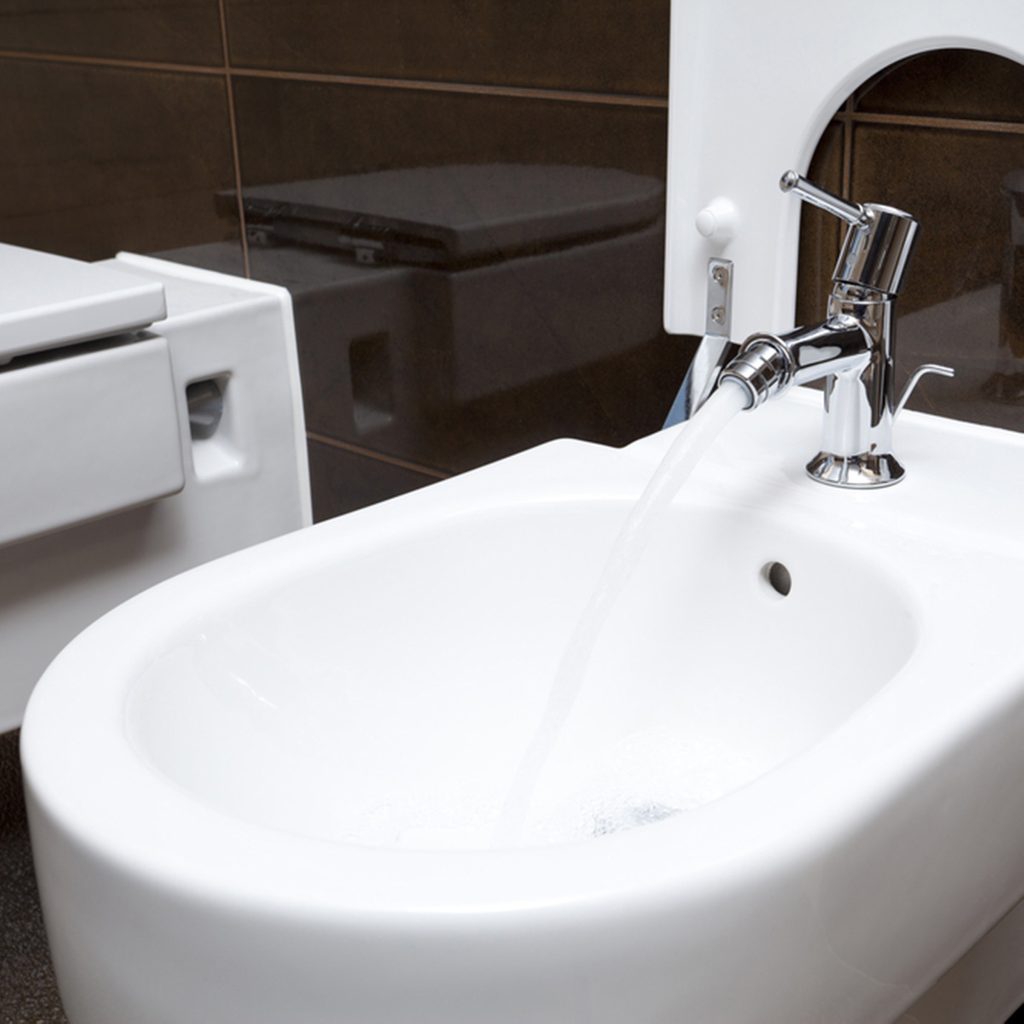What Is a Bidet and How Do They Work?
Updated: Oct. 20, 2023

Experts say bidets are not only more hygienic than toilet paper, but can be easier on your plumbing.
As bathroom fixtures evolve, the humble bidet is making a resurgence, challenging traditional notions of post-toilet hygiene. Though common in many international locales, the bidet has been slower to infiltrate the American restroom landscape. This device, dedicated to cleaning the posterior with a water stream, offers an eco-friendly and potentially more hygienic alternative to the omnipresent toilet paper. In this article, we’ll delve into the increasing popularity of bidets in the U.S., explain their mechanics, provide a guide on their usage, and weigh their economic implications. Whether you’re considering an upgrade or just curious, read on to get acquainted with the world of bidets.
On This Page
What is a Bidet
Bidets are specialized fixtures designed specifically to cleanse the posterior region after using the restroom. In contrast to the traditional method of using toilet paper, a bidet offers cleaning using a stream of water directed towards the area, ensuring a thorough and hygienic cleanse.
Growing Popularity in the U.S.
While bidets have been common in many parts of the world, their adoption in American homes has been comparatively slower. However, recent trends suggest a growing inclination towards incorporating bidets in bathrooms. This shift is driven by several factors:
- Hygiene: Advocates argue that bidets offer a more sanitary cleaning option compared to toilet paper.
- Eco-Friendly: The use of bidets can significantly reduce the demand for toilet paper, which in turn can lead to fewer trees being cut down for its production.
- Plumbing Benefits: Bidets eliminate the possibility of toilet paper clogs, potentially saving on plumbing repairs.
- Health Safety: Considering that a significant percentage of infectious diseases are transmitted through human touch, bidets offer a touch-free alternative, especially crucial in a post-pandemic world.
However, it’s essential to balance these benefits against the primary criticism of bidets, which is their water usage. Some believe bidets waste water, while others argue that the water used by bidets is considerably less than the water used in the production of toilet paper.
How Does a Bidet Work
A bidet functions by using a stream of water to cleanse after using the toilet. The operation and mechanism can vary based on the type of bidet, but the basic principle remains the same. Here’s a general overview of how different types of bidets work:
- Traditional Stand-alone Bidets:
- These look similar to a toilet but have faucets and are meant for cleaning the posterior.
- After using the toilet, one would move over to the bidet, sit or straddle it, and adjust the water temperature and pressure using the faucet handles.
- The water is directed upwards, ensuring a thorough clean.
- Toilet Seat Bidets (Washlets):
- These are integrated into the toilet seat.
- They typically have a retractable nozzle that sprays water.
- The user can control the water pressure, direction, and temperature, often via a remote or an attached control panel.
- Some advanced models may offer additional features such as heated seats, air drying, and deodorizing.
- Handheld Bidet Sprayers:
- These are similar to a handheld shower or kitchen sink sprayer.
- They are typically mounted on the wall next to the toilet or attached to the toilet tank.
- The user manually directs the water spray to the desired area and presses the lever or button on the sprayer to release water.
- Portable or Travel Bidets:
- Portable bidets are small devices, often battery-operated or manually squeezed, that one can carry while traveling.
- They store a limited amount of water and can be filled before use. Once ready, they release a spray of water when activated.
How to Use a Bidet
Regardless of the type, here’s the general process of using a bidet:
- Position: After finishing with the toilet, position yourself so that the nozzle or faucet is aligned with the area you want to clean.
- Activation: Activate the water stream, adjusting the temperature and pressure as needed. For traditional bidets, this might involve turning a faucet, while for modern bidet seats, it might mean pressing a button or turning a dial.
- Rinsing: Allow the water to rinse the desired areas. The duration and thoroughness of the rinse will depend on personal preference.
- Drying: Once cleansed, users can either pat dry with toilet paper or use a dedicated towel. Some advanced bidet seats even come with an air dryer feature.
- Retraction and Cleanup: For toilet seat bidets, the nozzle will typically retract after use. Ensure the area around the bidet is clean and dry.
By offering a water-based clean, bidets provide a gentle yet thorough way of maintaining personal hygiene after using the toilet.
Financial Implications of Using Bidets
From an economic standpoint, the use of bidets could translate to considerable savings in the long run. Brondell, a prominent bidet manufacturer, estimates that an average person spends around $250 annually on toilet paper. In contrast, with the marginal water cost accounted for, using a bidet could result in an annual saving of about $180.
Conclusion
Bidets, with their hygienic, environmental, and economic benefits, are gradually transforming American bathrooms. As with any investment, potential users should weigh the initial costs against the long-term benefits and savings. For those interested in making the switch, there’s an array of bidet toilet seats available in the market to cater to different needs and budgets.